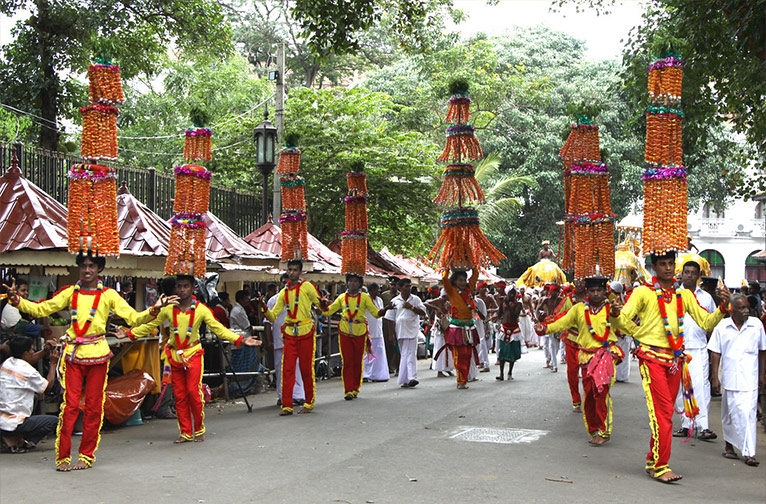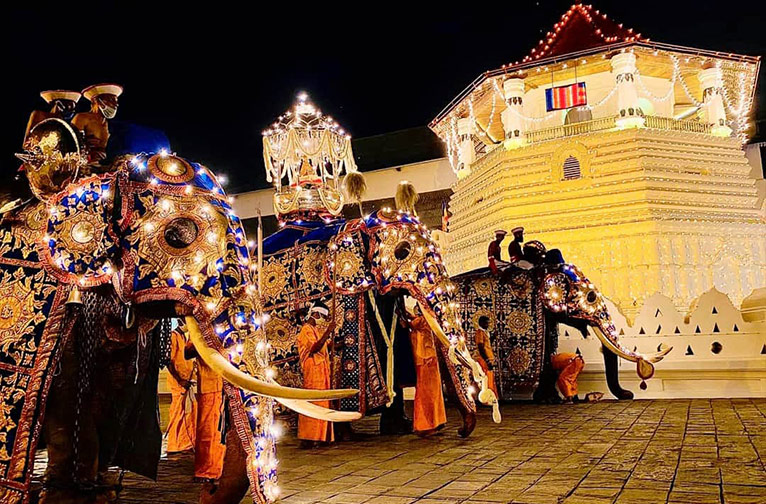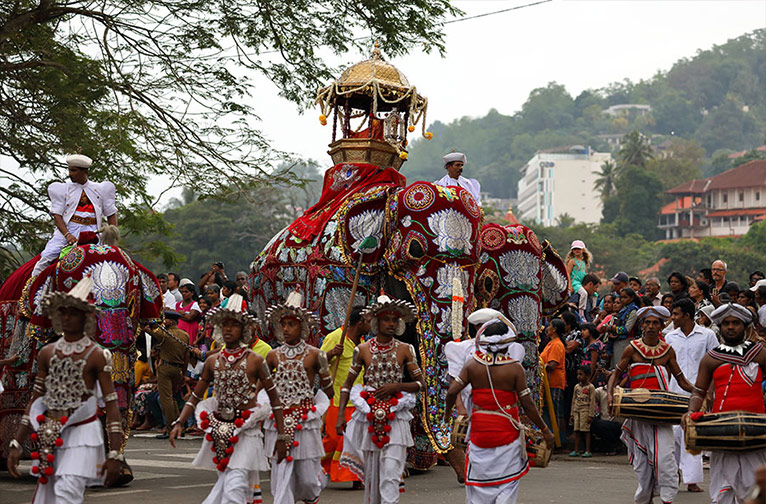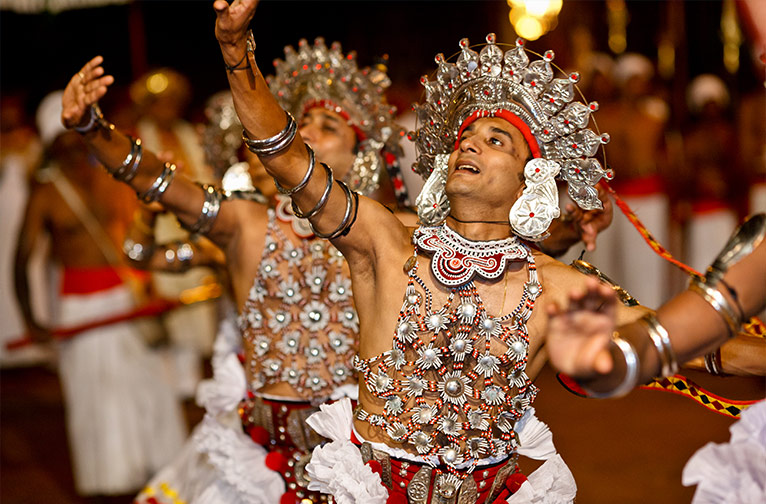A fabulous outpouring of religious fervour, culture and tradition, Sri Lanka’s annual celebrations of the Kandy Perahera should definitely be on your bucket list when visiting the spice island in the lunar period of the months of July and August (Esala and Nikini in the Sinhala calendar). More popularly known as the Festival of the Temple of the Sacred Tooth this extravaganza of pageantry finds dates back to the 3rd century. Strangely enough, few people know it is a fusion of two festive processions–The Esala Perhara, a deep-rooted spiritual ritual invoking the gods for timely rain for cultivation, and the Dalada Perahera, the temple festival itself, which celebrates the arrival of the Sacred Tooth Relic of the Buddha in the island from India during the reign of King Kithsirimewan in 310 CE.
The kingdoms of Anuradhapura, Polonnaruwa, Dambadeniya, Yapahuwa, Kurunegala, Gampola, Kotte, Seethawaka and Kandy all witnessed the annual Dalada Perahera as a showcase of their guardianship of the Sacred Tooth Relic steeped in many sacred rituals and pujas. The location of the relic was subject to change depending upon the change of the capital city of the ruler of the day. Under the guardianship of Dewanagala Rathnalankara Thero, the Sacred Tooth Relic was spirited away from Sabaragamuwa Delagamuwa Maha Vihara in Kuruvita of Ratnapura District where it had been hidden away during Portuguese rule. It was brought in secret to Kandy and enshrined there in the Gedige Vihara in Asgiriya. A temple was eventually built to house the Sacred Tooth Relic by the lake in Kandy. The custodians of the Sacred Tooth Relic are the High Priests of Malwatte and Asgiriya.


What you witness today is a more public procession, which allowed the citizens to come out and worship the treasured relic. Prior to this ruling, passed by the Kandyan Raja Kirthi Sri Rajasinghe (1747–1781), the festival used to be exclusively for the royals.
The high points of this lavish parade, which sweeps around Kandy Lake and the Temple of the Tooth, are the procession of gaily decked out elephants, the lavishly costumed flag bearers of standards of different Provinces and the Temples, musicians, drummers, whip crackers, acrobats and jugglers, fire breathers. All eyes are focused are on the Kandy Esala Perahera Casket containing the sacred relic–venerated as the living Lord Buddha, and the four devales–Natha, Kataragama, Vishnu and Pattini safeguarding it. Natha, is the deified Buddha-to-be and tutelary deity of Kandy; Vishnu,the guardian of Sri Lanka; Kataragama, the god of war and victory; and Pattini, the goddess of chastity. Steeped in symbolism, the activities and performances of the participants add their own significance to the multi-layered rituals of this 10-day festival surrounding the Sri Dalada Maligawa or Sacred Tooth Relic Temple.
The procession on the first five days of the festivities is referred to as the Kumbal Perahera. The sixth day is relegated to the procession of Randolis or gilded palanquins carrying the idols of the deities through the streets. A beautifully decorated Maligawe Tusker, flanked on either side by two dressy elephants with illuminated masks, has the sacred task of carrying the venerated casket containing the precious relic under a sheltering canopy. The relic is also taken to both the Kiri Vihare and the Valli Amman Temple. Singers, dressed in all white welcome the hallowed procession and then lead the way for the devala processions which follow.


The Natha devala procession, is the first procession that follows the main Dalada Perahera; it is followed by a procession of the Vishnu Devala, with participants sometimes dressed in blue; following this is the procession of the deity Kataragama, with the participants clad in red. The last procession is that of Pattini or Kanaki Amman, remarkably the only known female deity worshipped in the Buddhist tradition, which is almost exclusively dominated by male gods.hers is the only procession in which female dancers take part. The original tradition of royal ladies accompanying the parade in gilded chariots was discontinued by Raja Kirthi Sri Rajasinghe.
On the last day of the Randoli the celebrations end with the water-cutting or Diya Kepeema ceremony at the Mahaweli river in Getambe, a town close to Kandy.
It’s interesting to learn that the costumes of the temple elephants have been made in the tiny town of Weligama for almost a decade now. Comprising seven pieces and weighing between 35 and 50 kg, the triple layered costumes are time-consuming artisanal works. The gold and silver embellishments on velvet are done in India and the cotton casing over the sponge filling used is Sri Lankan. The creatives in the costumes take their inspirations from artworks on the walls of the Sri Dalada Maligawa temple.
At Kuragala, you will get to visit a community which makes traditional Sri Lankan musical instruments; among these is the popular Kandyan drum. The village of Pilimathalawa has long been involved in making the brass accessories for many temples, apart from the Temple of the Sacred Tooth.
The rich atmospherics, the frenetic action on the streets and the vibrant colours and lavish costumes illuminate one of Sri Lanka’s most riveting cultural events. Be there to soak it all in...